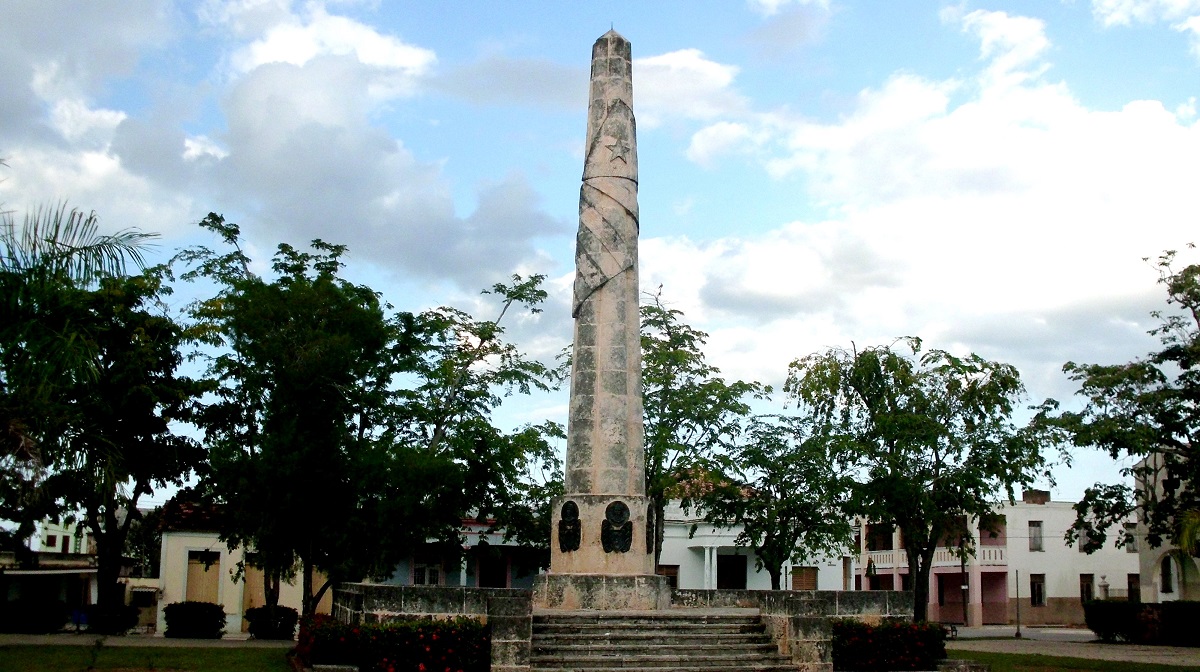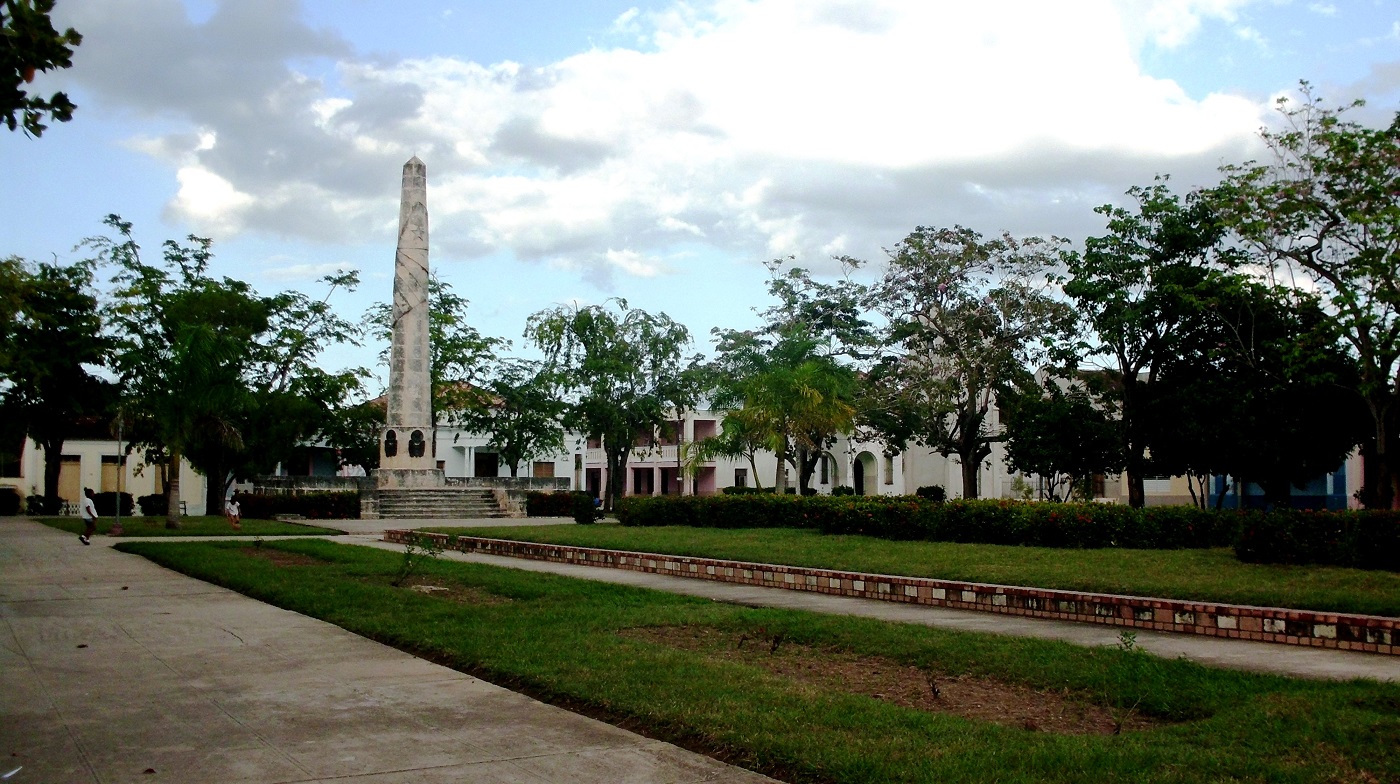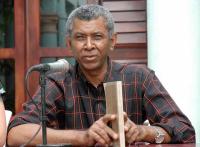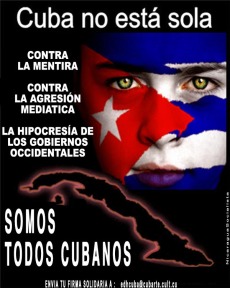El Guáimaro by José Martí: stately and beautiful town where the big fire burned (+ Photos)
Publicado: febrero 24, 2021 Archivado en: Cuba, Cubanos por el mundo, Culturales, De Cuba y el Mundo Deja un comentarioBy Lázaro David Najarro Pujol
February, 2021.- Since Camagüey did not know the Villa of Santa María del Puerto del Príncipe, today, the Apostle of Cuban Independence, José Martí Pérez, did not visit Guáimaro, a beautiful city that entered the glory and sacrifice of the Homeland, cradle of the First Constitution in Arms, but he did write deep and heartfelt poetic prose on the easternmost of the Camagüey’s municipalities.
On April 10, 1969, in the Guáimaro of the victors, the patriots organized the Republic in Arms under the Constitution approved to also erect a nation (The division in the executive, legislative and judicial powers was established, the operation of a Chamber of Representatives for the direction of the actions, Carlos Manuel de Céspedes president of the Republic was recognized and the current national flag was adopted as a banner).
“Free Guáimaro was never more beautiful than in the days when she was going to enter glory and sacrifice,” said the National Hero of Cuba, who pointed out with poetic prose: “Nature is more beautiful when the light of the world grows with that of freedom […] »[1]
The inhabitants of that Camagüey city are proud with the words of Martí that day of glory for the Homeland: «[…] Guáimaro was more beautiful than ever. It was the stately town as a family at a party. The East, and the Center, and the Villas came to the embrace of the founders».
Although everyone was celebrating to joyfully witness the entrance of the patriots, what would happen in the town did not reach Spanish ears. It was a great shock, said José Martí, who seemed to have been the protagonist when describing the tremendous reception of the Mambi troops and especially Carlos Manuel: «[…] eyes, clear and firm […]».
«Martí follows his account published in Patria, April 10, 1892: And what a courtship that comes with Carlos Manuel de Céspedes! Francisco Vicente Aguilera, tall and tanned, and with a beard across his chest, comes talking, at a farm step, with a florid old man, very white and gray, with the lawyer Ramón Céspedes. They are silent, of a lot of love the one, and the other of his natural seriousness, José María Izaguirre, who in Céspedes has his eyes, and Eligio, the other Izaguirre, blond and bearded. Court on horseback seems Francisco del Castillo, who brings his fame and fortune to war, and in Havana, when he was taught, he won the seat of a prominent man: and José Joaquín Palma talks to him, with his silk speech, very much looked at and celebrated, and very arrogant in his eyes. The other is Manuel Peña, all spirit and freedom, made in the sun and in combat, a brave soul in a tiny body. Jesús Rodríguez is the other, with more deeds than words, and a man who gives himself or takes away. They come and go, caracolendo, the assistant Jorge Milanés, very urban and patrician; Governor Miguel Luis Aguilera, raised in the field loyal, and captivated by the boss, and a young man with a broad back, and a look at the same time fiery and tender, who rides like someone who was born to command, and is Fernando Figueredo. -In silence they pass a few times; and other times you hear a “viva”.
And the church bells rang at the command of the Father of the Nation (Carlos Manuel de Céspedes), with the arrival of Ignacio Agramonte, Antonio Zambrana, Salvador Cisneros, Francisco Sánchez Betancourt and Eduardo Agramonte. And from Las Villas they were not lacking: the Polish Carlos Roloff, Miguel Jerónimo Gutiérrez and his son, Honorato Castillo; Eduardo Machado, Antonio Lorda, Arcadio García, Antonio Alcalá and Tranquilino Valdés.
Guáimaro radiated the light of freedom for three days. With unprecedented precision, José Martí details the events: «On the eleventh, at the same table, the deputies sat, already in the Chamber, and by the authority of the seventh article of the Constitution they elected the president of the executive power who was the first in execute Carlos Manuel de Céspedes; President of the Chamber, presided over by the Assembly of Representatives of the Center, that the Chamber was widening and making, Salvador Cisneros Betancourt; and general in chief of the forces of the republic to the general of those of the Center, Manuel Quesada».
On the 12th, the Apostle reported: «[…] President Carlos Manuel de Céspedes swore the law of the Republic standing up, with accents of endearing resignation, and the sublime leave of those who love the country so that he deposes the who estimated decrees of destiny […]».
«[…] Guáimaro lived like this, from house to house, from meeting to meeting, from banquet to banquet. Today Céspedes invited to his long table, and between rustic and rich, with eighty covers, and tablecloths and wines: and in his ceremonious gaze, and always his, happiness was seen: what moving outbursts, of young and old, and what a mixture of learned pomp and natural greatness in speeches! […]».
A month later, on May 10, the Mambisas and Guaimaro’s troops, before the approach of the Spanish troops, they decided to continue the example of Bayamo of burning the entire town before surrendering the enemy troops.
José Martí reflects this epic: «Neither the mothers wept, nor the men wavered, nor the lazy heart began to watch those cedars and mahogany fall. With their hands they lit the crown of bonfires to the holy city, and when night closed, the sacrifice was reflected in the sky. The great and pure fire burned, roared, hissed; in the house of the Constitution it burned higher and more beautiful. Above the wave of flames, in the church tower, hung the lighted bell. The town went to the forest, to the Derrocal. And the act of the Constitution hid a good hand in the ground. It is necessary to go looking for it!».
The historical leader of the Cuban Revolution, Fidel Castro Ruz expressed on October 10, 1968 in La Demajagua: «In Camagüey the revolutionaries from the first moment proclaimed the abolition of slavery, and already the Constitution of Guáimaro, on April 10, In 1869, it definitively consecrated the right to freedom of all Cubans, definitively abolishing the hateful and secular institution of slavery.
[1] José Martí: “On April 10”, in Complete Works, t. 4, Centro de Estudios Martianos, Havana, 2007, pp. 382-389. (Author’s photos) (Translated by Linet Acuña Quilez)












